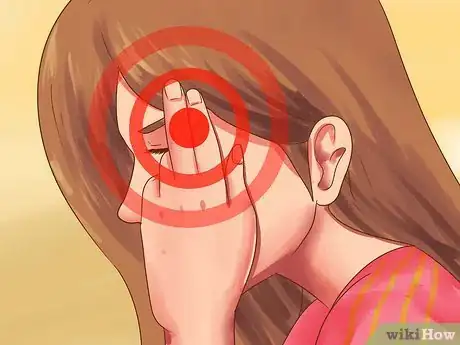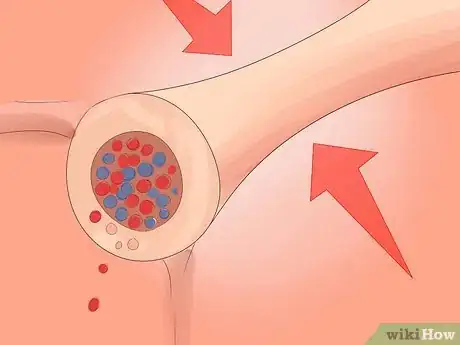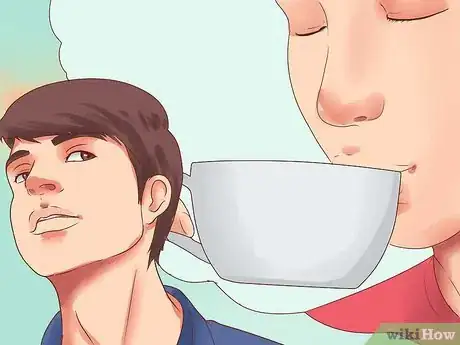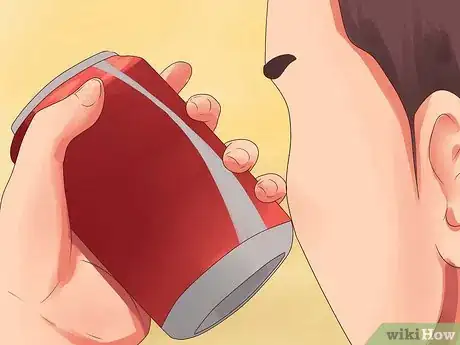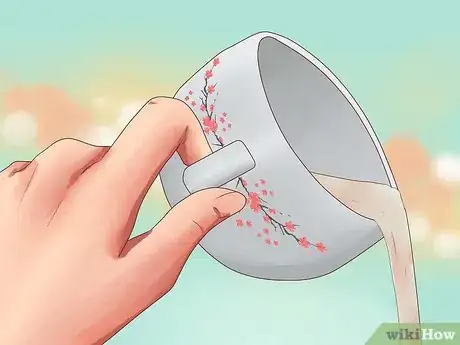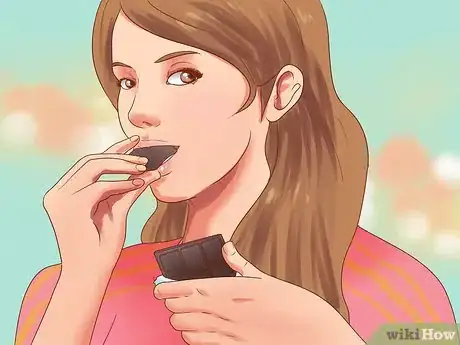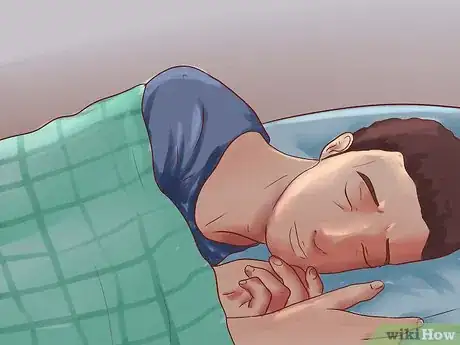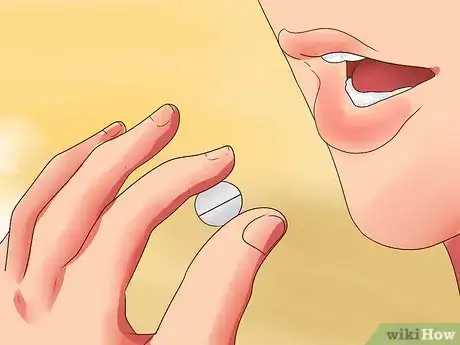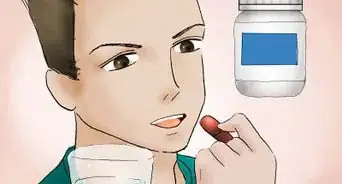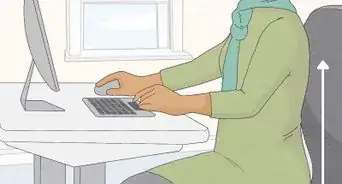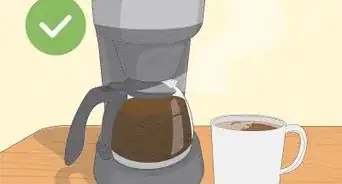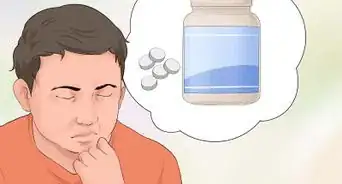X
wikiHow is a “wiki,” similar to Wikipedia, which means that many of our articles are co-written by multiple authors. To create this article, volunteer authors worked to edit and improve it over time.
This article has been viewed 47,630 times.
Learn more...
Maybe you are one of millions of people who would like to quit caffeine once and for all, but you find the habit too difficult to break. This may be especially true if you experience caffeine withdrawal symptoms. Headaches are the most common complaint of people who try to cut back on caffeine. Luckily, there are some measures you can take to lessen - if not completely avoid - the headaches which occur as a result of caffeine withdrawal.
Steps
Part 1
Part 1 of 4:
Understanding Caffeine Withdrawal Headaches
-
1Recognize a caffeine withdrawal headache. Headaches are almost always the primary complaint of people trying to cut caffeine from their diet.
- The pain associated with this kind of headaches is characterized as radiating and dull and it can last for a few hours to days.
- Since your body was used to high level of caffeine, it will react to any situation where there is sudden decrease of this substance.
-
2Understand why caffeine withdrawal causes headaches. Caffeine is a substance known as a vaso-constrictor, this means that is decreases the diameter of your veins.
- When caffeine runs through the blood vessels, it causes the veins to constrict or narrow. This explains why people who regularly drink coffee will eventually have high blood pressure.
- When you stop taking caffeine, the veins that were constantly constricted will open up. This increase in the blood vessels' diameter leads to an increased blood supply to the brain. This sudden gush of blood to the brain causes headaches.[1]
Advertisement
Part 2
Part 2 of 4:
Recording Your Caffeine Intake
-
1Identify which items contain caffeine. While coffee might be the most common source of caffeine, it is only one of the thousands of food and drink products available today that contain caffeine.
- The most common sources of caffeine are energy drinks, chocolate, sodas, gum, ice cream, soft drinks, teas, and others. The best way to determine whether a food or drink product contains caffeine is to read the label.
- Some medications also contain caffeine. These drugs include Dexatrim (weight control drug) and pain relievers such as Excedrin, Anacin and Midol.[2]
-
2Record your caffeine intake. While it might be difficult to identify exactly how much caffeine is in each drink or piece of food you consume, you should at least try to estimate.
- Knowing how much caffeine you normally consume will help you to avoid headaches in the future.
- The information you acquire from keeping records will assist you in determining how much caffeine you should cut down on each day.
-
3Familiarize yourself with the amount of caffeine in certain products. On average, an ounce of pure liquid coffee contains around 500 mg of caffeine. Other common sources of caffeine include the following:
- Energy drinks contain about 400 mg of caffeine; sodas contain 30 mg; iced tea contains 40 mg; creamy lattes contain 100 mg; and Diet Coke contains 45 mg.
- Read the label to find out the exact caffeine content of a food or drink. If you cannot find this information, but you know caffeine is present, just take note of total amount you ate or drank.[3]
Advertisement
Part 3
Part 3 of 4:
Decreasing Your Caffeine Intake Gradually
-
1Understand the benefits of reducing your caffeine intake gradually. Headaches can easily be avoided if you reduce your caffeine intake slowly.
- Even though you might be so motivated to start your healthy living that you cut out caffeine cold turkey, taking this approach will only lead to withdrawal symptoms such as headaches.
- It's much better to cut down on caffeine little by little to allow your body to adjust to the reduced caffeine intake and decrease your chance of headaches.
-
2Decide how much caffeine you're going to cut back on each day. Every person is unique, so your tolerance for caffeine might be very different to someone else's. Thus, deciding the amount of caffeine you need to cut down on each day is a personal choice.
- However, the ideal progression is to cut out ¼ of a whole cup of caffeinated drink for every 3-5 days. This will give your body enough time to adjust.
- However, it's important to remember that it is not only coffee or tea that contains caffeine. This is where your list will come in handy. Whatever food or drink you are taking, the main objective is to progressively cut down your intake. So if you are a chocolate addict, then eating a little less chocolate each day will do the trick.
-
3Substitute your caffeine intake with healthier choices. Withdrawing from caffeine does not mean that you will not be able to enjoy a warm coffee each day. While you are avoiding caffeine, you can look for healthier alternatives.
- You can opt for decaffeinated varieties of coffee, drinks and food. Just remember that you should always be on the lookout for the possibility that you are still taking in caffeine, only in different form.
- One strategy for decreasing your caffeine intake is to mix caffeinated and decaffeinated coffee. For example, you can use ¾ of caffeinated and ¼ of decaffeinated coffee for your first week. Then during the second week, you can use ½ of caffeinated and decaffeinated mixture of coffee.
- During the third week, you can use ¼ of caffeinated and ¾ of decaffeinated coffee. Then you can switch to using an entirely decaffeinated formula of coffee. After another week, you may be able to stop drinking decaffeinated coffee altogether.[4]
-
4Get enough rest during the withdrawal period. Headaches can also be avoided with plenty of rest during the withdrawal period.
- Coffee gives you extra energy because of its stimulant properties. However, if you try to cut down on coffee, you might experience tiredness and headaches.
- Getting plenty of rest (at least 8 hours sleep a night) will decrease the possibility of headaches.
Advertisement
Part 4
Part 4 of 4:
Using Pain Relief Medications
-
1Take paracetamol to decrease pain. Paracetamol does not contain caffeine, so it is okay to take it at this time. Paracetamol falls within the family of acetaminophen, which is a common drug used in relieving pain.
- The main mechanism of this drug is to block pain signals and prevent them from reaching pain receptors in the brain. This drug does not lead to addiction, in contrast with narcotics.
- Take 325 to 650 mg of paracetamol every 4 to 6 hours. It is recommended that you take this drug with food to prevent a stomach upset.[5]
-
2Take naproxen sodium to alleviate pain. This is an over-the-counter pain reliever that falls within the family of NSAIDs or nonsteroidal anti-inflammatory drugs.
- The main action of this drug is to suppress hormones that cause inflammation. By decreasing inflammation, pain is also decreased.
- Avoid taking naproxen sodium if you have a known allergy to aspirin or other NSAIDs drug. The initial dose of this drug is 550 mg by mouth and followed by another 550 mg every 12 hours.[6]
Advertisement
Warnings
- In case of severe headache or if your symptoms do not improve even if you have carefully cut down on caffeine, consult your doctor.⧼thumbs_response⧽
Advertisement
References
- ↑ http://teeccino.com/building_optimal_health/133/Avoiding-Caffeine-Withdrawal-Symptoms.html
- ↑ http://www.webmd.com/diet/features/caffeine-shockers-products-surprisingly-high-in-caffeine
- ↑ http://www.caffeineinformer.com/the-caffeine-database
- ↑ http://www.sharecare.com/health/coffee-drink-health/headaches-from-caffiene-withdrawal
- ↑ http://www.drugs.com/dosage/acetaminophen.html#Usual_Adult_Dose_for_Pain
- ↑ http://www.drugs.com/dosage/naproxen.html#Usual_Adult_Dose_for_Pain
About This Article
Advertisement
